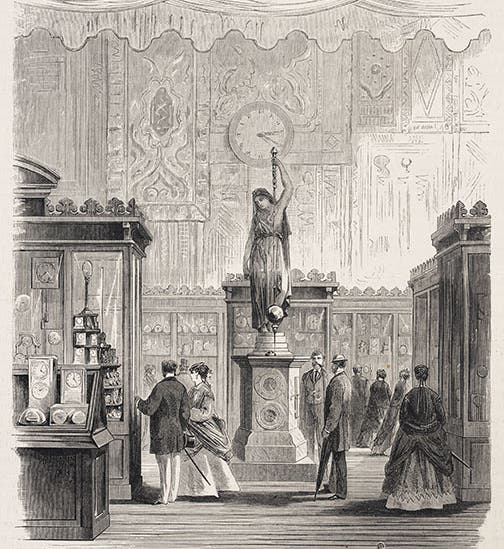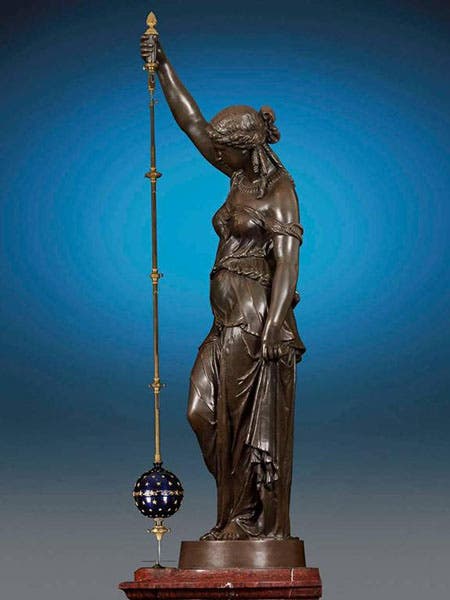Scientist of the Day - Eugène Farcot
Henri-Eugène-Adrien Farcot, a French clockmaker and balloonist, was born Feb. 20, 1830. In 1855, Farcot began producing beautiful conical pendulum clocks. Ordinary pendulum clocks had been invented by Christiaan Huygens in 1656, and by ordinary, we mean that the pendulum swings back and forth in a vertical plane. Each time the pendulum returns to it starting point, it trips an escapement, the clock ticks, and the second hand moves forward a small step. The oscillating pendulum clock keeps excellent time and was in widespread use when Farcot began offering his conical alternatives. In Farcot's clocks, the pendulum swings in a circle, in a horizontal plane, tracing out a cone, instead of oscillating back and forth. It moves according to the same laws, and takes the same amount of time to complete one cycle. But it needs no escapement, and the second hand moves smoothly, instead of by tiny jerks. Since the pendulum needs room for its conical path, it cannot be hidden behind a glass door, so Farcot made a virtue of necessity and put the pendulum right up front, held in the hand of a life-sized standing figure of Urania, usually sculpted by Albert-Ernest Carrier-Belleuse.
Many of Farcot's showpiece clocks were exhibited at the various world's fairs that became so popular in England and France after the London Crystal Palace Exhibition of 1851. We lead with a steel engraving from the Exposition Universelle of 1867 in Paris, showing a Falcot clock held by a Carrier-Belleuse Urania (first image), and then show two modern photos of still existing Farcot clocks, one standing in a building at Drexel University in Philadelphia, which was displayed at the Paris Exposition of 1867 (second image), and may be the one shown in the contemporary line engraving, and another recently sold by a dealer (third image), which was originally exhibited at the London Exhibition of 1862.
There were some disadvantages to Falcot's conical clocks: they were incredibly expensive, possibly because each was attached to a full-size work of art by an established sculptor; and the dial had to be down below the pendulum, which made the clock face difficult to read unless the clock were raised up on a plinth. Nevertheless, to us, Falcot conical pendulum clocks seem an aesthetically unsurpassed way to mark the passage of time.
Oddly, Farcot is almost better known as a balloonist, perhaps because during the Siege of Paris of 1870-71, he was one of those who flew a mail balloon, the Louis Blanc, out of the besieged city, to Belgium, and then wrote a book about it, Voyage du ballon le Louis-Blanc (1874), which went through 6 editions in its first year (fourth image).
We do not have this work in our collection, but we do have an earlier treatise on aeronautics by Farcot, La navigation atmosphérique (1859). In fact, we have two copies, and the second copy, recently acquired (fifth image), came from the library of Camille Flammarion, along with a number of other books on ballooning that Flammarion had collected. Dr. William B. Ashworth, Jr., Consultant for the History of Science, Linda Hall Library and Associate Professor, Department of History, University of Missouri-Kansas City. Comments or corrections are welcome; please direct to ashworthw@umkc.edu.










